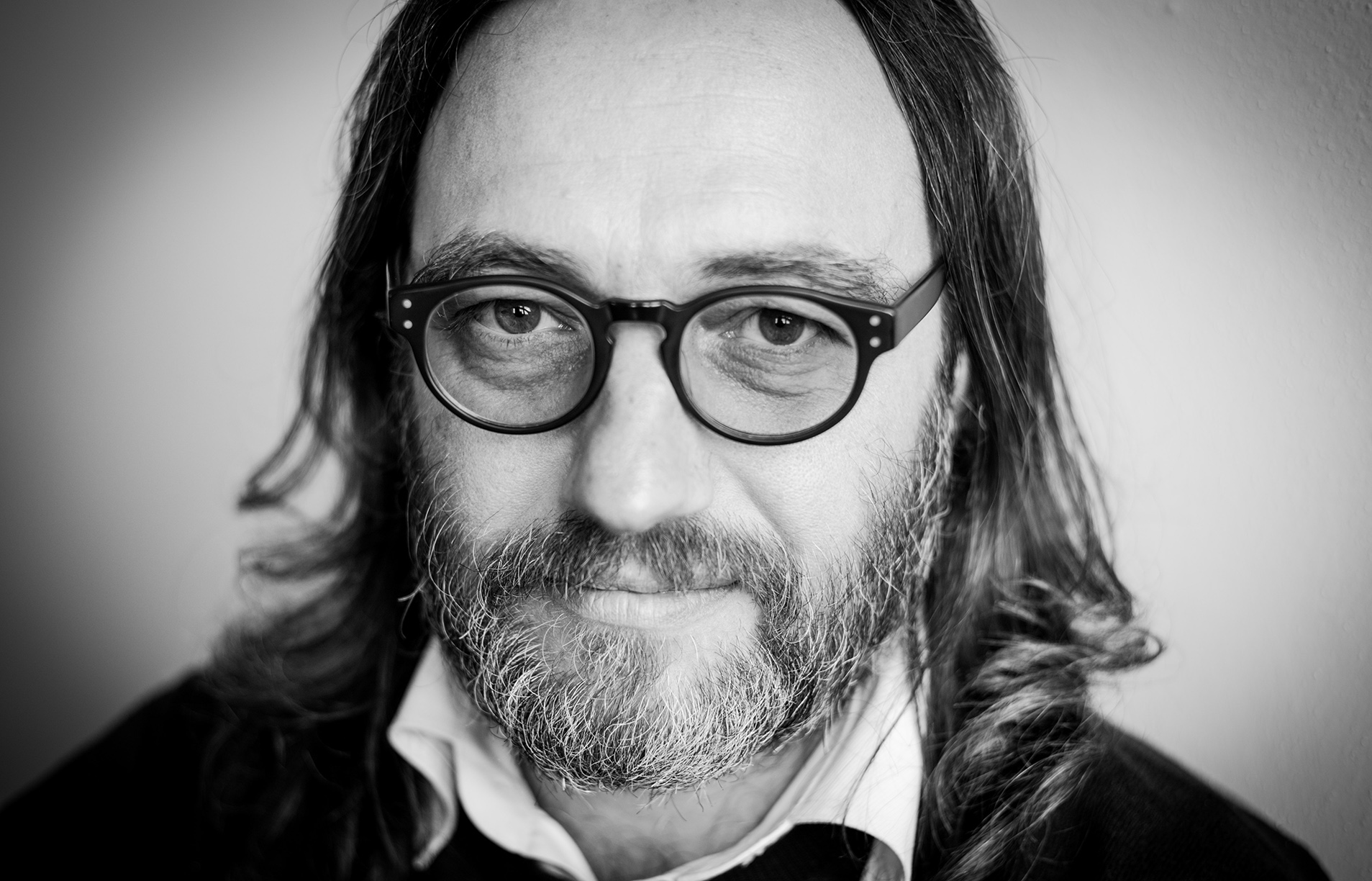
Named after a stream which lives at the foot of the town of Montepulciano, Salcheto is a biodynamic winery that was converted from a classic farm sharecrop to a winery in the mid-1990s. You could call Salcheto both extremely interventionist and extremely non-interventionist at the same time. The wine is made by using native yeasts in its fermentations and produced without the addition of sulfites. What is unique about Salcheto is the way they are utilizing an innovative technology to allow them to produce wine without additional inputs. The innovative technology is a fermenter which recycles the naturally produced CO2 during the fermentation process in a way that allows for "soft" low stress, zero input winemaking (it's complicated - read below for the full explanation!).
The winery itself is very focused on maintaining a minimal carbon footprint and they claim to be the first company in the world to have certified the carbon footprint of a bottle of wine. They are also focused on reducing their water footprint. Through the use of biodynamic practices Salcheto has also developed a "Biodiversity Index."
Monty Waldin talks with owning partner and winemaker Michele Manelli about the challenges of branding for Vino Nobile, biodynamics and their innovative use of technology.
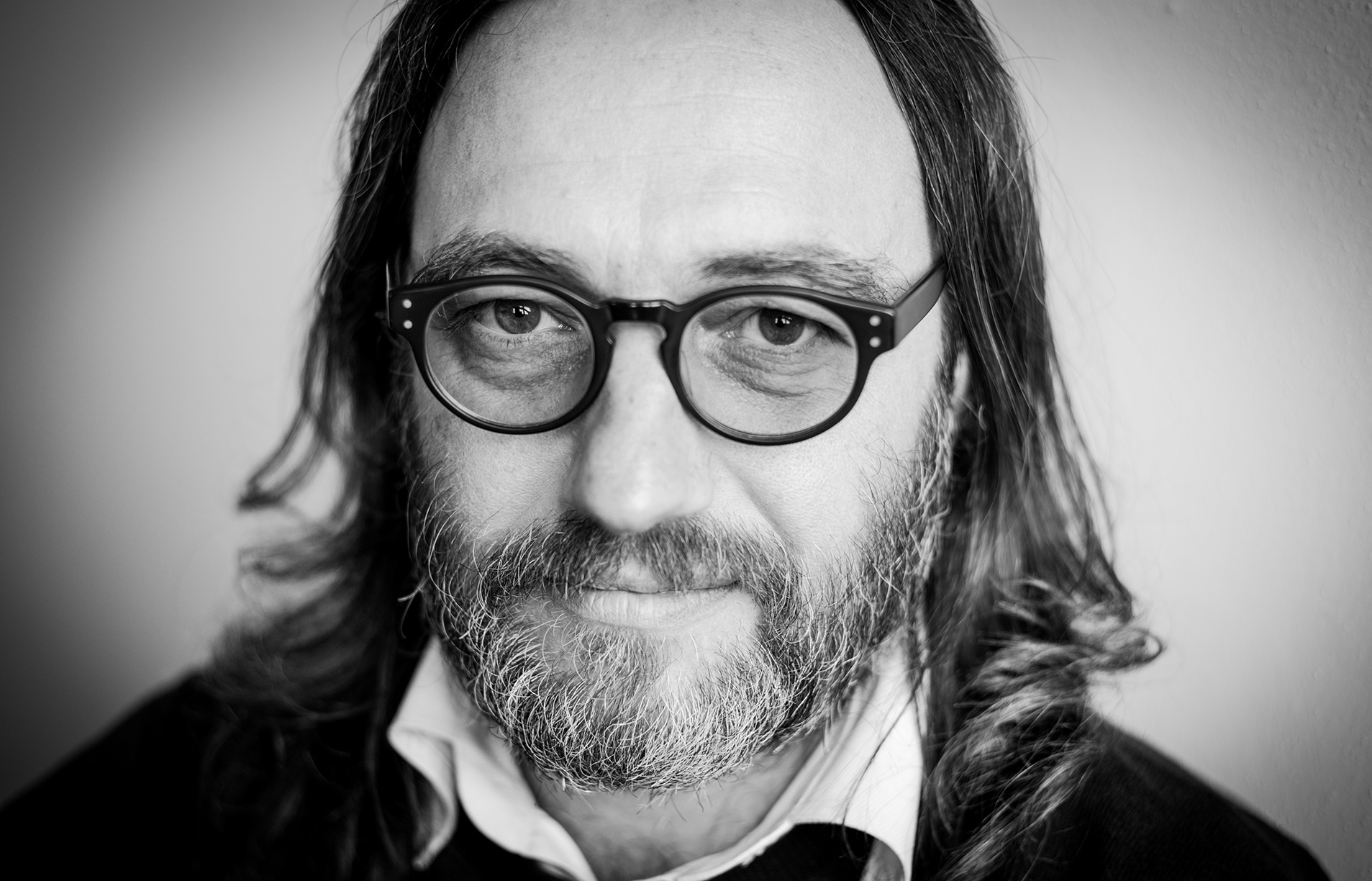
Michele Manelli photographed by Monty Waldin
Monty Waldin: I made a lot of new friends with my article [for Decanter magazine’s Italy Guide February 2016] on Vino Nobile [which pointed out what incredible quality and value Vino Nobile wines are compared to those of its near-neighbour Brunello di Montalcino] and maybe lost a few friends in Montalcino. It's amazing.
Michele: I don't know. They [in Montalcino] are spoiled. They are very spoiled. There are people that have done a great job out there. In the nineties, it was a great moment. I'd even include the eighties. That's where the success would be. At that time, we [in Vino Nobile di Montepulciano] didn’t have enough good people to create the story. That's it. It's simple.
It's hard when you start from ...
If you go back, of course to Monticiano in the sixties.
1600s was not known, yeah. 1960s, yeah.
Montepulciano was, in the 1500s, the wine school of Italy. If you consider from Piedmont to Sicily, you could find documents from that time that mentioned Montepulciano as a guideline for quality.
In the 1500s?
In the 1500s! We were exporting wine to all the parts of Europe. Abruzzo [a separate Italian region to Tuscany, on Italy’s eastern seaboard] started making wine in the 1700s to develop from the Apennines down to the coast and dedicated [or re-named] the name of its [main red] wine [grape, by calling it “Montepulciano”] in an attempt of quality to Montepulciano, Montepulciano di’ Abruzzo. That was a real connection with Montepulciano, dedicated to quality. [Reminder to readers: Vino Nobile di Montepulciano is a red wine from Tuscany in west-central Italy made mainly with the Sangiovese grape which is grown around the hilltop Tuscan town of Montepulciano. The red wine called “Montepulciano d’Abruzzo” is made from a totally different grape called Montepulciano and comes from the Abruzzo region which lies along Italy’s East-Central Italy coastline. Phew!]
They stole your brand basically. Abruzzo says with that little grape. They think, "Oh, the wines of the town Montepulciano are so brilliant, we're going to name our best grape after it."
Yes. We're going to dedicate the idea of winemaking of quality. In fact, it was positive. It's a great story. By the way, we should tell it to people. Montepulciano: not fight the Abruzzo with that. It really explains the background of winemaking in Montepulciano.

Is it confusing for people — one of the biggest selling wines in Italy is the grape called Montepulciano which comes from Abruzzo, Montepulciano d’ Abruzzo. Then you have Vino Nobile the noble wine of Montepulciano, the town behind me. How easy is it for you, as a wine producer from the town of Montepulciano, to get your message across in the marketplace?
It's a big mess. In fact, it's a problem. It always has been. We have no easy solution because we are so much smaller than the Abruzzo operation [Montepulciano d’Abruzzo is one of Italy’s biggest production quality red wines, making it a staple of many wine stores. Each year around 7 million litres of Vino Nobile are made, where over 70 million bottles of Montepulciano d’Abruzzo are made], so the number of bottles and cliques, visual cliques that are around the world are much different. In my opinion it raises hopefully the opinion that Tuscans are slow. If you take some time, it's that we should promote our name “Nobile.” Because this is us, only us, worldwide. We are the Vino Nobile.
What does Nobile mean and where did that come from?
Well actually that’s tough, because it’s the same meaning in the English translation nobile, noble. Again, we considered it all during the 1500s, 1600s. We had a great deal of recognition from the [Royal] courts around Europe, and there’s the writings of the poet and scientist Francesco Redi [1626-1697], “Montepulciano is the king of all wines!” Basically we got used to calling it a noble wine. Over time, it remained a nickname, or a way to define it, and that's when we decided, or someone decided, to name the appellation this way after the war, in the fifties.
We are actually the oldest appellation in Italy that has been recognized with the DOC 50 years ago. This October [2016], we are organizing festivities to celebrate it.
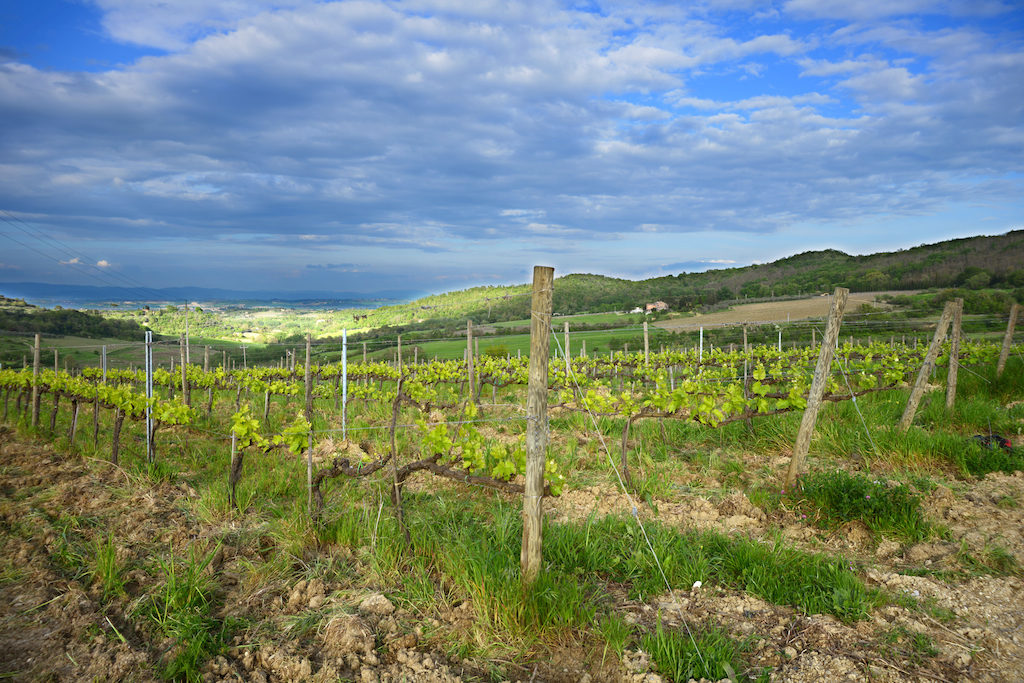
I don't necessary want to compare Vino Nobile to Montalcino, your near neighbor. But what are the differences in winemaking here? The climate? The soil?
Well, for sure we are more internal. We are less influenced by the sea, we have a lower temperature [cooler climate wine-growing]. We have a difference in temperature, especially from the San Angelo side, especially from the southern side of Montalcino. And we have definitely more clay—sandy clay—where clay has a significant representation. These influences, or phenomenons, contribute to the fullness, freshness and vibrant acidities. In general Vino Nobile is a brighter, fresher, fruit experience and easily pair-able with food. I think that the choice of Montepulciano to not go for long wood aging, which is not probably also, in the dealing of Sangiovese to have long, long aging. For me, it’s a wonderful wine in 10 to 20 years. Not longer. I mean the top expressions of it of course. I think it was a good choice to enhance this idea of an important, but fun wine.
From the 1990s when the wine boom started, what did Montalcino do that Montepulciano didn't do in terms of branding, and getting people really excited about its wines?
I think that they led the way with the wine idea and with commercial support from firms that were investing in a solid distribution vision, and with partnerships with media groups. All combined to became a river on which everyone sailed. The United States also played a major role. In the US market they also created a wonderful experience. For example, the Banfi experience it's not something that I am unveiling, it's something that we can read. Then they opened up the road and many others followed.
The funny thing is that it's a very simple algorithm. We’re not talking about something complicated, you've mentioned it before: it’s bold, colored, kind of soft for some reason. We're not talking about something which would take an hour to explain, or a big book to read. In fact it was based, including distribution, on very, very good work in communication, in the sense of homogeneous work. Basically, we could say that Montalcino is a simple wine [to explain to people: one grape in Sangiovese, one style meaning an ageworthy red wine, and only one town called Montalcnio allowed to make it].
Well, It’s one grape from one town! It's a red wine made from a single grape, Sangiovese, from one town, Montalcino. It's pretty easy to explain. Here it's a little bit more complicated. How can you simplify your message so that Vino Nobile di Montepulciano can exploit the growing demand for high quality red wine?
The problem is in Montepulciano we have not yet come up with anything. This certainly doesn't help us, but on the other hand we have so much information because of our extremely long history and because of our idea that the wine is predominated by Sangiovese, but also it’s the blend of biodiversities. We have a defined style that is full of freshness, and with a little aging and so on; but, in general it's a series of information which is much more complicated. Our contradiction with Abruzzo and the name. In general, we didn't come with a simple one and we have so much content on the other hand, and we are small, and we didn't have the leadership.
What is the difference in scale between Montalcino in terms of numbers of producers?
Montalcino is around 300, perhaps a little more, and we are around 80. In general I would say that, and no one can convince me otherwise, but honestly, but we have about the same percentage of great wines and the same percentage of bad ones.
What does that mean in the market? You're obviously smaller, but you've got a similar percentage of great wines, does that mean there's less great wine for people to get excited about?
Sadly, yes. I say yes, because 20% over 80 is not 20% over 300, this is the point. For sure, it could look like a problem. On the other hand, we are more rare, and that rarity is also a nice feeling when you have the opportunity to take advantage of it.
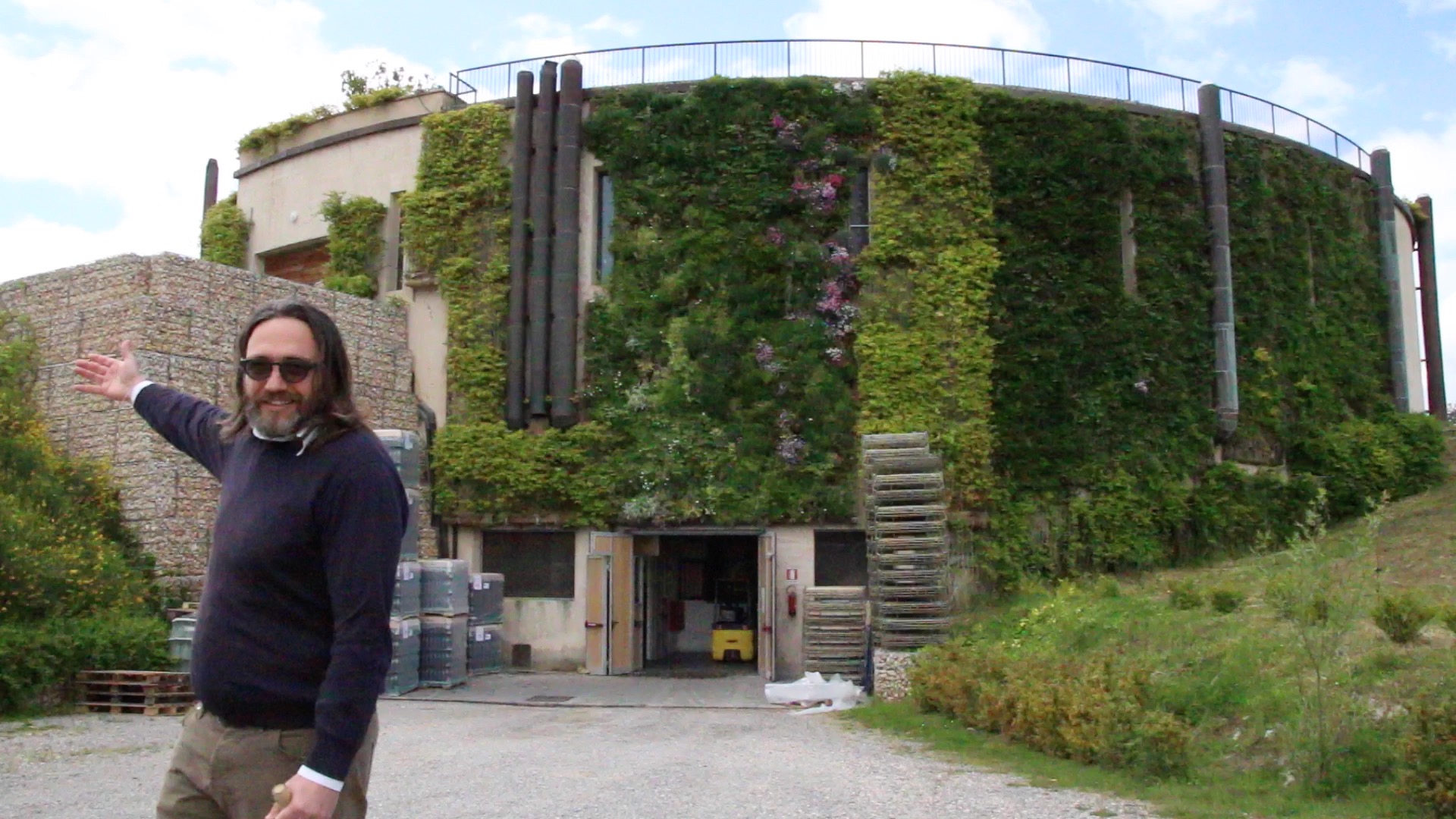
There's a real trend now in Tuscany, and elsewhere, for wine tourism and wine roots—the whole wine experience, coming to the region, or even seeing films about the region online for example. How important do you think that will be in terms of Vino Nobile's recognition, market presence, or market image?
Well, I think that we are doing very well in Montepulciano from that perspective.
We have a great landscape, and we have a lot of content. Besides wine, our town, our art, our mosaic tradition, museums, and exhibitions are on a very, very high level, just to mention a few things. We offer great accommodation, considering that the average rating of the Montepulciano hotels is really, really high. It’s busy. The data from two years ago noted that we had 350,000 visitors sleeping in Montepulciano in that year, and paying the local taxes. It's a lot. Now, let's relate it to the potential success or in the context of our wine. The connection between wine and its terroir is huge. I think that one of the best memories you can bring home is the experience of a great stay in the terroir where the wine is made. That has been the success story for many areas.
I always mention the relationship between Lago di Garda [Lake Garda] and the Germans. This wine [a dry white called Lugana]became a success story in Germany, because [German] people [often from the wealthy town Munich a shortish drive to the north]were going on holiday on Lake Garda and they were loving it, and so it became a great success in the market. Our problem is that we have started to distribute a bit more in the many markets where we see tourists coming from.
In terms of terroir, what are the influences of water, wind, sun and temperature, and how they affect the wines?
Well, we have to be very careful in building up the plant. This is artistry. You have to challenge a little bit more than the average to build up the plant because you have a higher risk of compaction in our area [due to the clay in the soil]. Especially where we are, we are one of the highest altitudes. In this altitude, the clay becomes even more present. Building up the plant is very tough. You have to be very careful, then you have to be very careful of compaction in general, because you race to depress the plant very easily; but, on the other hand, you have a great opportunity in moments of dryness which is also in our terroir. Even though we are more or less two degrees lower than our neighbors, we are in Tuscany, sunny Tuscany and tending to be dry Tuscany a big part of the season. The clay gives you back great support, so we don't need irrigation. In Montalcino, for example, we see a lot of irrigation set up, which is a fine tool - why not? Here, it's non-existing in our vineyard.
In terms of climate, are you directly influenced by the Mediterranean or by other factors in terms of the day-to-day and seasonal temperatures?
Well, we have bigger exposures. We are probably more influenced by the Appenines. Or at least there is a good balance between the two. In this sense it helps a lot in terms of maturation.
Especially the opportunity of extractability on the skins, in this sense it's very attractive. Then, particularly where we are located, we are very supported by the winds. It's a very windy area, you can feel it now, and this is a great tool. Both for during the seasons for the medical pressure, but especially during the harvest time.
Why is it so windy? Is it a valley influence? What's happening? Why is the air moving so much?
This is the point, we have a big valley out there and this creates movement. There is no doubt about it.
The name of the valley is?
It's Val di Chiana. Actually, in Montepulciano before the 1600s, they were manufacturing boats.
Boats?
Yes, in fact the Chiana Valley was a big lake, a huge, enormous lake. It was not a round shape, it was more like a fish bone, the central bigger part and then the channels. It had been drawn in a bird’s eye view by Leonardo [da Vinci]. It’s this famous painting, where he was not just painting for fun, but was actually drawing the valley to prepare for the huge drain out, which then was done by Leopold the Second, which has been the greatest in Europe at the time, to then turn the Chiana Valley into a great agricultural area, where the first Italian tobacco was grown, the Tuscano cigars, and now we have also a lot of other things. This is funny, it's a transformation. I always think it's impressive to imagine what we had, it was a transportation also toward this big lake and so Montepulciano was always an important city. That's fun.
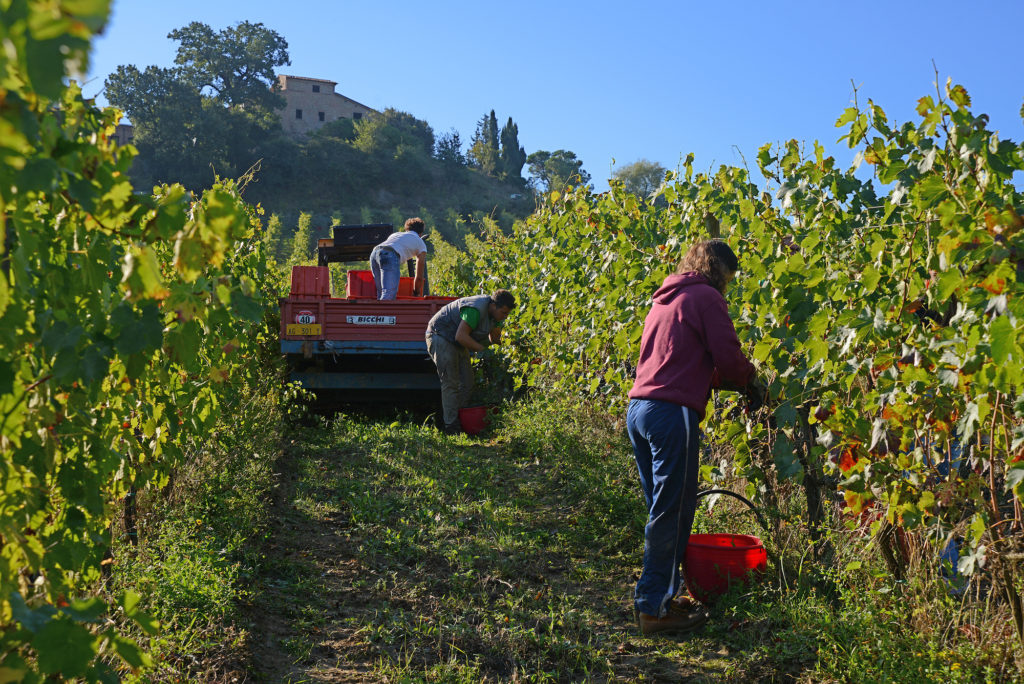 Was the water coming from the lake, or was it coming from snow? You mentioned the Apennines which is the backbone of Italy. Was it the melting snow coming down?
Was the water coming from the lake, or was it coming from snow? You mentioned the Apennines which is the backbone of Italy. Was it the melting snow coming down?
Yes, the melting snow. We have the Apennines on the one side of the Chiana Valley. On this side it's more hillside, but we have the Amiata Mountain, which in some ways creates a border.
The Grand Duke of Tuscany was fighting with the Vatican and an engineer came out and said, "You know guys, if we build a wall," because the big thing of Leonardo was to drain out everything on the Tiber.
Which is on their side. Basically by building a one meter wall, he was starting to re-feed the Chiana Valley of water, which was a big problem after so many investments from the Grand Duke of Tuscany. Basically Grand Duke of Tuscany had to start a war against Rome.
Can you just tell me about the differences in soil that we find within the region? What is the effect of each soil type, just in general terms, on the Sangiovese.
Well, the lower you go in Montepulciano, Chiana Valley, the more you will find fossils and a sandy presence, so less clay. Generally soils are more vigorous. The plant reacts, pushing a little bit more. This is where the simpler Sangiovese will grow, up to other varieties grow. Sangiovese does not really love very fertile, very oxygenated soil, very pushing the situation. That's where actually we have a presence of other varietals in the blend at this point. The more you go up, the more you find clay, the more you find rough agriculture, but extremely rich in term of concentration and quality, and also personality. Besides the freshness, it goes deep into minerality that you can find in a top crus of the clay soils in Montepulciano. This is something that is a real link that I like to remember. Besides the freshness, the vibrancy, you have this hint of minerality which is very, very attractive.
Does the clay make the wines quite dark in color?
Well, yes, I would say, definitely a little bit more than Sangiovese from warmer areas.
What effect does the the clay have on the “mouthfeel” of the Sangiovese?
Well, the tannins are definitely more mature, or the seeds tend to have a very, very rapid maturation. It is probably historic, since Montepulciano has always liked tannins. In the early days we considered this a character of the wine. We're losing it. Because we have to change, we have to evolve, I mean life changes. There is no tradition that can be called something that has not been an evolution before. Today we're changing. Probably, we don't have to relate clay and Montepulciano to tannins. We have to consider that it has been a style for a while that has now definitely been, not abandoned, but evolved.
Are you saying that the clay can give these wines quite a full in the mouth, sort of chewy experience? And now the winemakers are trying to make them taste a little bit smoother, without losing necessarily the concentration, maybe a bit food friendlier? Easier drinking?
That is it, which is also related to the aging process as I was saying before. Because we have chosen to go more in the bottle, than in wood. Montepulciano— our Salco is two years in wood. Our most important cru is up to four years in the bottle before we release it. There are other producers who choose to never go over the two years of wood in important wines, but rather prepare the wine in the bottle. Again, to go in this direction of important, but very friendly drinking.

Michele Manelli with Monty Waldin
How much Vino Nobile di Montepulciano is produced every year? Roughly how much is consumed in the town itself by tourists, hotels, and restaurants, and where are your biggest export markets?
I don't remember the last record, but we are represented about 7% to 8% locally. Then our presence in Italy is not huge. As an appellation, we are around 20% to 25%. On our side in Salcheto we are higher. We have a greater success in Italy. Germany is our number one export market. Then there are other German-speaking countries. Even in Germany, mostly in Southern Germany.
That's where most of the Italians [based in Europe but outside Italy] are though, isn't it?
Yes. Then you have a nice move in Belgium for example. We have a tradition in Belgium somewhere and this is nice. Then, we are growing in the United States, but it's very unsatisfying, I don't remember the percentage, but I don't think we are more than 3% to 4%.
Why is it such a hard market for Vino Nobile?
Well, I think we are simply not in the forefront of the market. We have very, very bad recognition in the reviewing [in wine journals and magazines]. We have considered, just for example, Wine Advocate didn't taste it for a year and a half - I mean in the appellation. Wine Enthusiast not in two years, then this year for one year, and this is only for Rosso di Montepulciano. There's more, just to mention something. I don't blame them, it's their choice. The point is corresponding, it's reflecting the very low recognition in the market, but it's not helping either.
It's a big opportunity anyway, that's a big hole to fill.
That's true. That's true.
Can you explain the history of Vino Nobile?
Well, imagine that it was together with some traces in Chianti the character of the first idea of quality wine in the 1500s, 1600s. By the way, we're talking about the 1500s and 1600s because that is when we find documentation about the phenomenon like wine more easily, and everything that happened before, which we know there were traces, but it was less qualified and quantifiable [meaning no written records exist of exactly when wine was first made around the town of Montepulciano, but it was almost certainly way before the 1500s]. We have had wine here in central Italy, since whenever wine existed. We have always worked, definitely Montepulciano has always worked, as I said, in a very, very advanced quality. It was the wine school in Italy. Of course, Italy went through a phase of depression in general in the late 1800s, early 1900s. Everything was kind of leveled at the low level.
Homogenized.
Homogenized. After phylloxera when the winemaking was restarting in Italy, Italy had been hit hard. Including the two wars, Italy was a very depressed country, because it had a long history from the Renaissance back to the Romans. What was reborn from these ruins was definitely not a model of quality everywhere, and that is the point. It was more like winemaking for the masses[after World War Two Italy was poor, and winemaking tended to follow a ‘quantity rather than quality’ ethos]. Sometimes vineyards were planted for distillation and so on. Montepulciano did not start after the war so clearly by working into quality, and most of the Italian areas did. Basically even though this was our history, we still had a great, let’s say viticulture culture. It was appreciated there.
It's funny to imagine, but it's a true story, Montalcino has a history that was not related to winemaking in the more on the forestry economy. Everybody around was buying wine in Montepulciano in the 1960s even though it was leveled down. This was the piece of the story.
Then in the 1980s we were a bit late. In the '70s and '80s others started first to reorient the wine activity for quality.
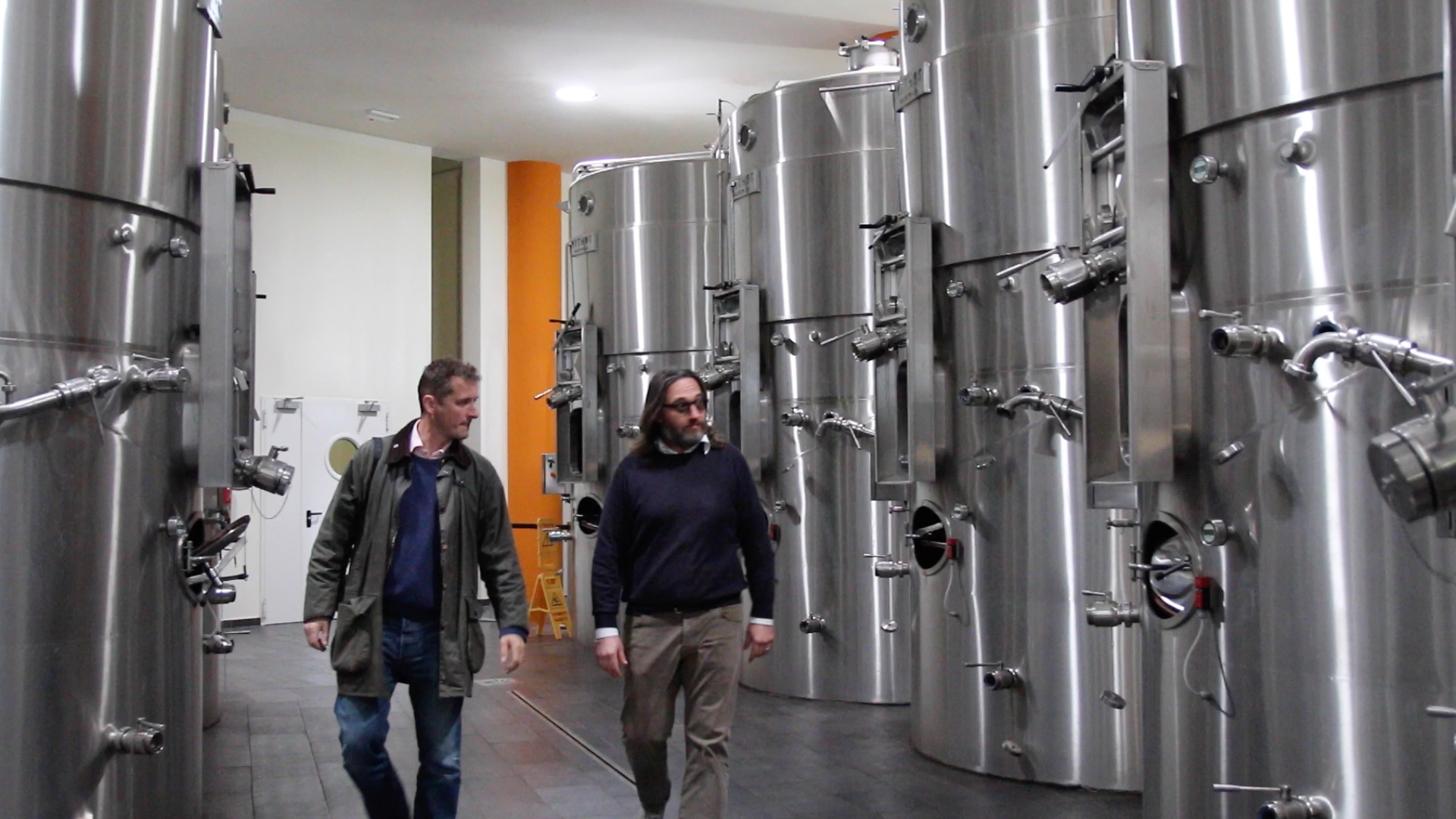
Was that because the Vino Nobile wine sold quite well locally, whereas other regions like Montalcino were really much more focused on exports, building their brand, if you like? Was that maybe one of the reasons?
That's a great point, because when Montalcino started to see its first investments, they were investment oriented to more wealthy international markets looking for great wines that were already produced a lot in France. In Italy, we came late. First we came and started to reorient, readdress, and turn around the businesses into quality and looked abroad. Montalcino did it, definitely built up a greater success story. I'm sure that there is an incredible route to the culture of wine and viticulture particularly in Montepulciano that is showing its benefits in every bottle. We have a future for sure. We will be here also for the next century.
Can you give me a brief description of the history of Vino Nobile?
Well, in the Renaissance [about 500 years ago] the reference was of great quality. Then came the depression in Italy and the world wars where Italy came out very damaged from a couple of centuries of difficulties. Then, still I reference, because at the local level, we were the wine reference, even though the Italy of wine after the world war was reborn on distillation, more than on quality winemaking. After this, we have been probably the last one to really refocus on building a turn around on quality.
Even though the appellation is the first of Italy, a real vision to look at the international markets that were demanding quality and high prices to really remodel the wineries happened later in the 1990s. It was a bit too late probably to catch up. Time will tell.
Quality-wise, okay, but on the marketing a little bit more work to do?
Yes.
Just tell me a little bit about Salcheto, the estate, the vineyards and your innovations in the winery.
We have been focusing on brightness and cleanness of the nose and the fruit. That was my idea of winemaking from the beginning.
When did you start?
Salcheto started in the mid 1990s. I joined in 1994, but I have been making the wine myself since 1997 and I wanted to do it with a lot of personality. Sangiovese was a choice. We started to make Sangiovese 100% when it was not legal yet, by the way, it was 1998 [at this time Vino Nobile di Montepulciano was supposed to be made mainly from Sangiovese + an addition of wine from other grape varieties, the idea being to soften the Sangiovese, to make it more easily drinkable]. I really thought, actually it's against biodiversity to have one grape. I understand. We can't be perfect. I really, really focused on this. I loved the identity of this wine, it's bright fruit with a length, not necessarily a punch of power, but a way to compromise during the tasting that remains with you all the time. It’s great with food, because of its vibrancy and sustainability I mean the good part of it [it = Sangiovese].
This was one part. Then I have been inspired by biodynamic and organic farming since the beginning. I have transformed this care about the environment, which was also personal skill [meaning his passion for the environment], into really carefully working on managing the environment that we are controlling. We as farmers are managers of an ecosystem.
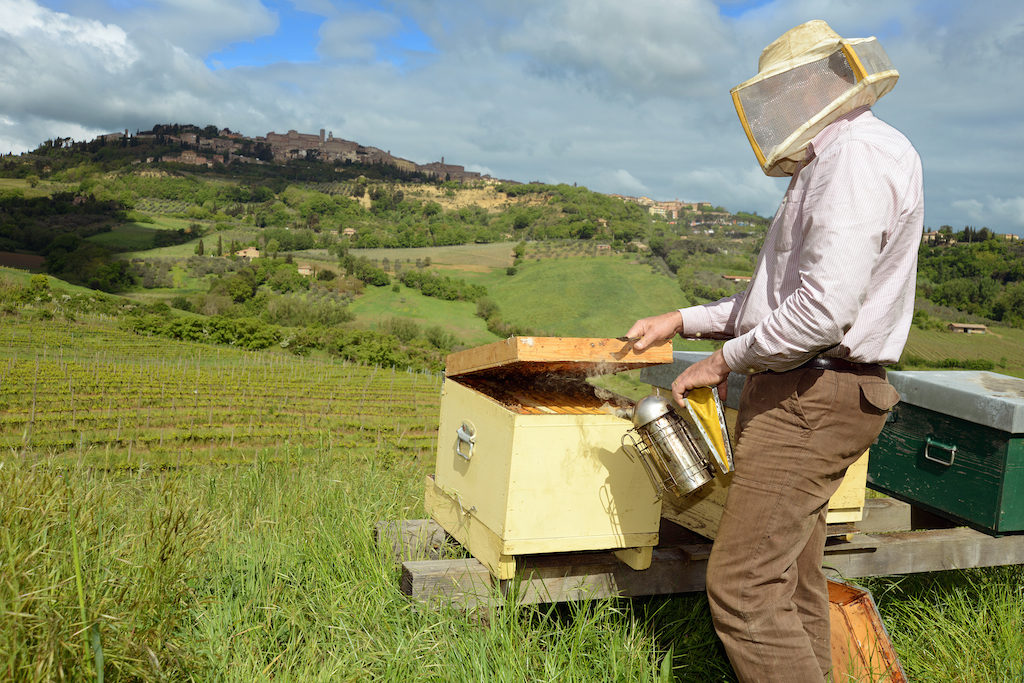
When you mention the environment, you're talking about the vineyard environment where the grapes are grown and how they're transformed into wine in the winery?
I'm talking about first the vineyards. If we talk about biodiversity, we have to measure the quantity and quality to preserve or even increase it. This is the point.
When you say measure it—how many wildflowers are growing in a vineyard? How do you measure that?
Together with researchers, we are developing a new approach based on the QBS index. We have been working a lot on this index which measures the quality and quantity of life in the soil. Inspired by the biodiversity-friendly approach and the world biodiversity- association approach, we look at water and air, but the soil was our first priority. Mainly, because that's where our action as farmers would have a consequence. For example, we sampled, just as you would in a lab with wine, to have a measure which is together with your visual and organic tasting creates your opinion on what you're doing. You do the same with the ecosystem or the soil, in this case, by making a lab test of how many, and which insects [meaning earthworms or smaller micro-organisms like beneficial bacteria and fungi] we have in our soil. This represents our relationship with biodiversity in a real way. Because your action could be disruptive because you compact the soil and you press too much with the machinery [eg. tractors], or because you spray something that is not appropriate and you’re just killing it.
When I say lab, I talk in a microscopic way, because we have for example, if you find as we do, micro, what they call it? 'crustaceo' it's like a micro-shrimp at the microscopic level and if it survives in my soil, I'm happy, because it means I'm keeping it healthy, this is the point. Then of course our vision of sustainability is [to create an] ecosystem, but it is also in the cellar [during the winemaking process]. We are energy consumers. We are potential water polluters, so we have to ensure that we do not leave a carbon footprint and water footprint, so again a management system is necessary. Then there is the supply chain and the distribution chain. We have to be aware of what we buy. For example, packaging. Is our packaging responsibly chosen and managed at the production levels? Choosing the one that is less impacting. In the distribution chain for example, they are lighter, but we have the lightest bottle possible existing in the market, because transportation will be less impacted too, by just one micro-example.
Of course, big, big innovation investment has been in the energy independencies of the winery, by reducing the consumption of energy, more than just producing renewable ones.
Talk [to me] about these lights, they look like very bright electric lights in here?
Not really. You can see now it's fading, it's simply a pipe that is reflecting the sunlight. It's a mechanical action, so it's a passive thing.
It was invented in the US in the ‘60s for anti-nuclear bunkers. Then reproduced for the market later by an American firm. I found it and I thought it was crazy, and basically perfect for a cellar that lives only during the day, but it's underground, so we need light. We are saving 26,000 kilowatt hours per year, just because we don't have electrical bulbs.
How far are we underground?
Here we are about five meters, but we go up to almost 18 meters with the natural light.
Isn't that better for the workers as well? I find it's quite relaxing, this light.
I do too. Even if I'm inside, closed, I see if the clouds are moving outside and then, consider that you have light, you don't have noise. Because there is no electrical tension. Then you don't have magnetic radiation. Then you don't have heat either, because what is reflecting is only the light proportion of energy. You are really creating a very balanced environment inside.
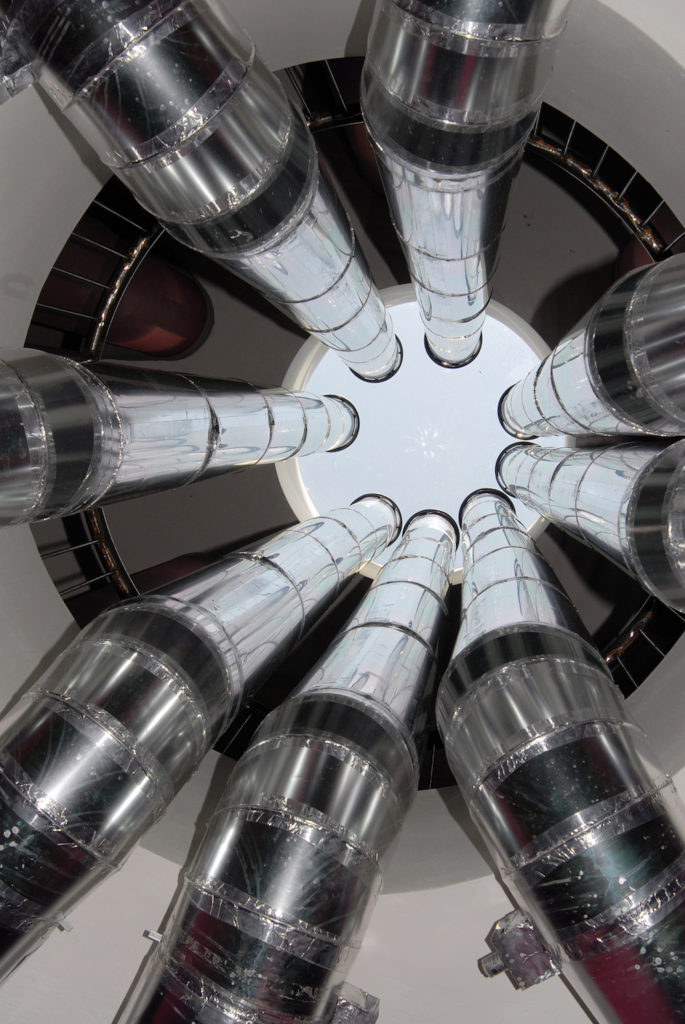 It's funny when you say that, the heat and the sun just went in, there’s a little bit of shadow. Tell me about the actual winemaking process that is very unique here. Tell me about how you make your red wines.
It's funny when you say that, the heat and the sun just went in, there’s a little bit of shadow. Tell me about the actual winemaking process that is very unique here. Tell me about how you make your red wines.
We worked with Lazzi, a manufacturer up in Venice to develop a fermenter. I think it's an incredible technical innovation. It moves the [grape] juice and [grape] skins inside the tank without any mechanical action, just by playing with the pressure created by the CO2. We have invented renewable energy here. We have a softer process, we have softer wines even though we extract more, which is something we all look for, softer and bigger, why not? We are replacing in some way the CO2 produced by the fermentation to sulfite, the dynamic of sulfite. In general we have created wines that are sulfite-free with indigenous yeast, with the technical approach. Because the idea was not to just make ideological wine, an exercise of philosophy. It was to create clean, reliable wine that we can distribute. For example if they want it to go to Australia or to the United States, it must be transported by sea, it must be moved, stored. This is the idea of reliability. Again, it must be fun and clean and as appreciable as we like to imagine wines. Clean, balanced; this is my vision.
The key point for you is an eco-wine if you like, which doesn't taste like a smelly old hippie has made it. It really tastes professional, it tastes like a normal wine. There's nothing different about it. The only thing that's different about it is the fact that you haven't really burnt any CO2 whilst you're making the wine, you've used the natural CO2 in the wine.
That is the point.
Let’s just take a step back, when you talk about red wine and the [grape] skins, why is it so important that the juice and the [grape] skins must be moving together so the people understand what the CO2 is doing, rather than using a pump to do that? When you make a Sangiovese, it's a red wine, it’s important to get color and flavor and tannin into the wine, how do you do that in an ecologically friendly way?
Well, normally the exchange which happens during the fermentation, while the fermentation occurs you want to transfer everything that is in the skin to the wine.
The color and the tannin.
The color, tannin that becomes color, taste, and so on. Normally we have to pump, or punch, these skins tend to float, to progress, to stimulate this exchange. We do it with the pressure that is created by the CO2. By creating the pressure, depressurizing or just stocking some pressure and then re-putting it inside the tank, we are able to create all these movements, to stimulate even more exchange, but without any energy and without any mechanical hurt [damage to the grape skins or to the juice]. This is the point; and, with great control, precise control of what happened inside the oxygenation, work of the yeast. It's an extremely simple but extremely technical process. I'm very proud that from our very, very small winery, we have been able to say one thing, never be satisfied but to get better. Because a little bit of sulfite, and a little bit of energy, and a little bit of pumping, we were happy. We are still happy about this, there is no witchery - is there?
Witchcraft.
To doing that, but in some way I think that the idea of thinking about reopening this format and making a new wine, of course while preserving the idea of quality. By the way, even looking for new tastes. Because the free sulfite fermentation [making wine with no added sulfite preservatives], definitely now it's a reality, we all consider, it opens up the fruit even more. The borders of the fruit are larger, that's sure. I mean during the fermentation specifically, also the wines are more reliable, are more solidly out defending from oxidation. The funny thing is that the wines are in some way stronger too, and even defend themselves better from oxidation without sulfides.
The more natural, you're saying the process of the winemaking is, actually the stronger the wine is once it gets into bottle?
You have to be extremely precise on other aspects of the mix, of the recipe. I don't mean other aspects where you have to put something else. Otherwise, or why not, but this is not the point. The thing is, we have to be extremely solid in certain process that we have, for example, in our case, restarted and all the selection of the skins, the time from the cut [the moment the grapes are picked and making sure they are picked perfectly healthy and ripe] to the introduction in the vat, the way we have the yeast work with the perfect micro-oxygenation. I'm talking about basics, not witchery [meaning a logical, science-based approach with the emphasis on common sense]
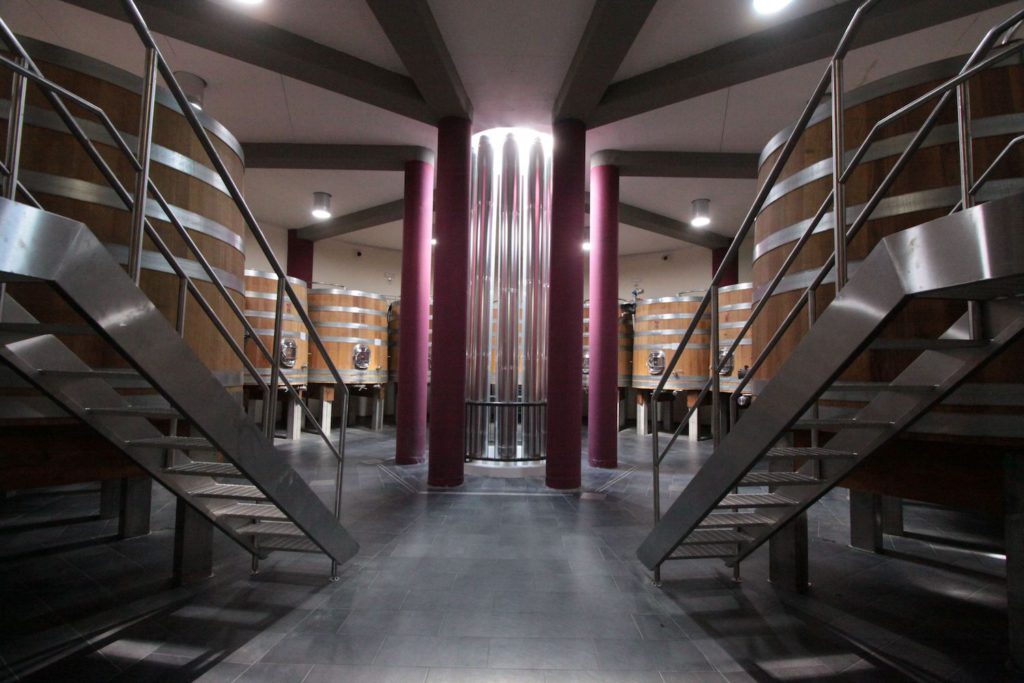
You're making a red wine in a sealed tank and when the yeast eats the sugar in the grapes and converts it, it's like us when we fart and we make gas, we produce waste products. In the winemaking process the yeast is eating the sugar and producing alcohol and gas which is the carbon dioxide. You're saying that this carbon dioxide ...
The by-product is the CO2.
You're keeping it in a sealed tank and obviously the tank would explode in a million pieces but you have a little hole in the tank, like a valve, and when the gas comes out it can be put back into the tank to allow the skins and the juice to mix. Like a teabag, you're mixing it with your spoon right? You're getting a little bit of color and then ..,
It sounds a bit like that. It's a good representation.
How does a typical Vino Nobile taste and does a Vino Nobile from Salcheto taste with this innovative way of fermenting the wine?
Well, in Montepulciano the battle between modernist and traditionalist is not that intense. Because we kind of move together in two directions. I mean of course we have lots of vertical tannins and so this could look like a characteristic from the best. Today, the profiles are very similar. We have this bright red fruit, we have this very fresh mouth[-feel in the wines], because of also the sustained acidities, and then we have a minerality in the top wines that is coming along very often. We have called it animality but in fact, it's the same two faces of the same men - minerality, animality.
Minerality means just basically a savoriness, you've got the ripeness, the juiciness and that savoriness through the middle of the wine, yeah?
Yes. I was talking about more the nose. In this sense this is something. We have grown together with Montepulciano in this way. We have always been very careful about the maturity of the tannin, but we have liked Sangiovese which would be apparently too thin, but very long in fact in the experience. When you get to higher qualities, and Montepulciano produces great high-quality wine, you can have besides this red fruit, besides this abnormal minerality, you can have sometimes a yellow presence, you can have peach, you can have expressions of fruit that are a bit out of the ordinary for Sangiovese red winemaking. It's something that happens. It happens because the variety of this terroir in a sense of the expression is great.
...
Monty Waldin was the first wine writer to specialize in green issues. JancisRobinson.com said of Monty’s latest book, Biodynamic Wine (2016, Infinite Ideas Oxford) that “it made me realise I knew next to nothing about biodynamics.” Buy it on Amazon.
More from Monty Waldin on Grape Collective.










